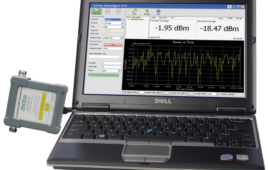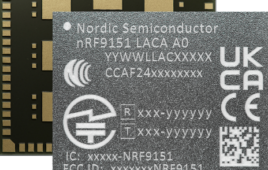Air travel has become increasingly sophisticated over the years in an effort to make travel as convenient and leisurely as possible. A big component of these upgrades is the incorporation of modern and wireless technologies to help passengers stay connected while in the air. When you look at the big picture, the amount of wireless communicative activity that occurs on planes nowadays might appear overwhelming. If you wore night vision goggles, you would see a spectacle array of laser lights going in all different directions as they connect and transmit commands between people’s wireless devices and networks.
There does lie a problem in this scenario however, with so many people simultaneously connecting to the aircraft’s wireless network at once. The array of cellphones, laptops, and other wireless gadgets bombard the aircraft’s WiFi, leaving passengers inadvertently battling each other over the limited amount of bandwidth.
Not only are wireless devices vying for the same connectivity, but the abundance of wireless activity also leads to an increase in radio frequency (RF) interference, which obscures or keeps the wireless devices and gadgets of some people from even connecting in the first place. Typical wireless devices operate in a range of 2.4-5.0 GHz bands, and newer brands could use up to 60 GHz for programs and applications like virtual reality and high-quality multimedia streaming. While it’s ultimately unknown how WiFi capable of offering this amount of bandwidth would suffice in an enclosed environment like an aircraft, there is clearly a growing need to make advancements in this field of wireless connectivity.
“Much of the older equipment simply ‘assumes’ (it’s operating in an isolated space), and that’s leading to a lot of the congestion and interferences that we’re experiencing, not just on the airplane but in general,” says Bryan Rusenko, technical director of the publication APEX.
Aoifes, a wireless technology company based in Seville, Spain, has developed software for a device that could potentially solve the issue of limited bandwidth in confined spaces like aircraft. Called the nMAP2, this wireless access point was specifically developed to function in an airplane cabin. Developed by the Alabama-based tech company VT Miltope, the nMAP2 works in conjunction with cognitive hotspot technology, using hardware and software to optimize the wireless network’s performance by monitoring and distributing parameters like data through channel availability, bandwidth utilization, client service location, and signal-to-noise ratios. The nMAP2 essentially works as a traffic coordinator for wireless devices as it captures information about the wireless environment before the vying gadgets operate.
“The challenges and opportunities for airlines, in-flight entertainment and connectivity system integrators and device manufacturers are intertwined and complementary,” says Jeff Drader, director of business development at VT Miltope. “One device cannot run independently of the others.”
The nMAP2 weighs 3.3 pounds and has dimensions of 57mm x 226mm x 162mm. The device comes with a mountain plate and antenna assembly, and has a maximal power consumption of 26 watts. The nMAP2 has a compact waterproof design, and is reliable enough to go without little or no maintenance upon being set up.




